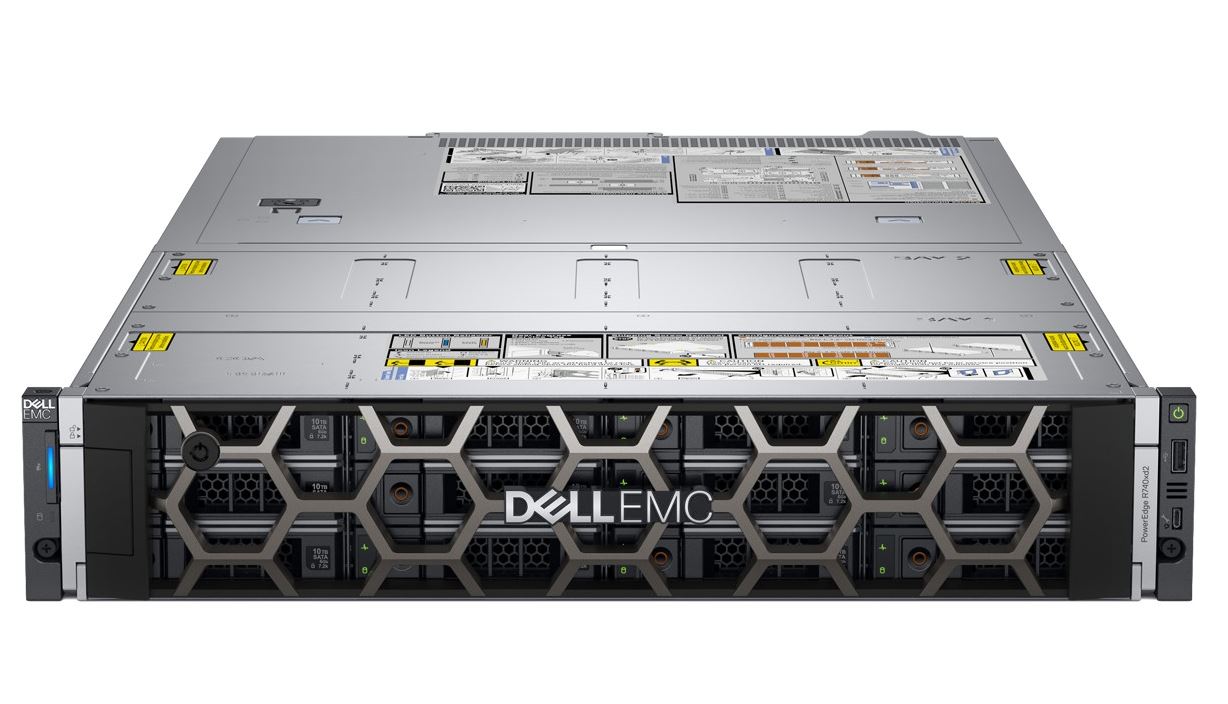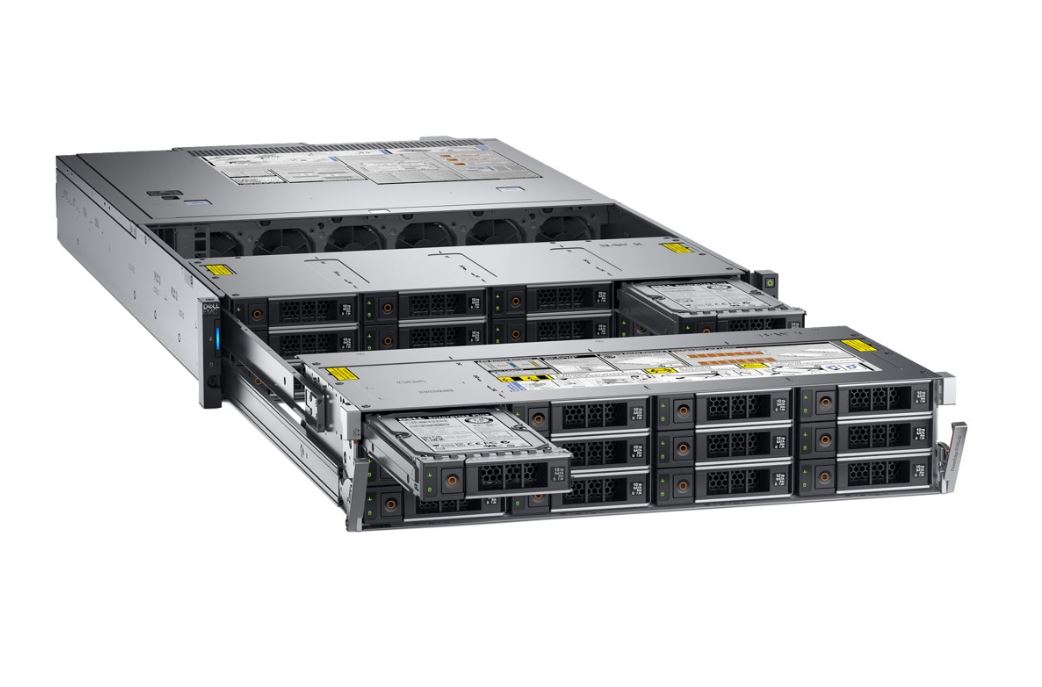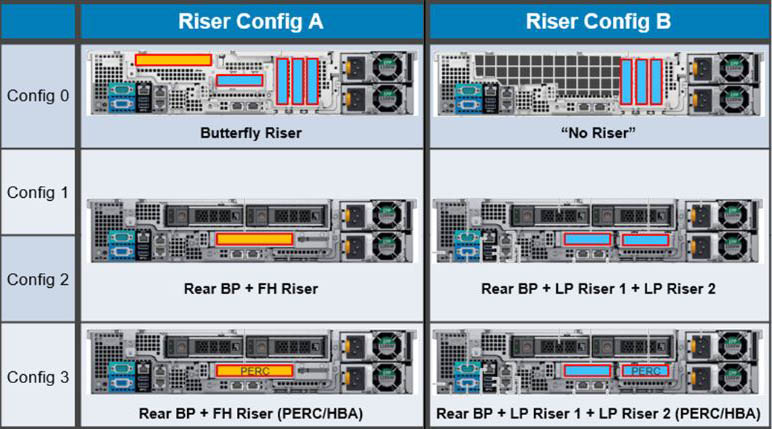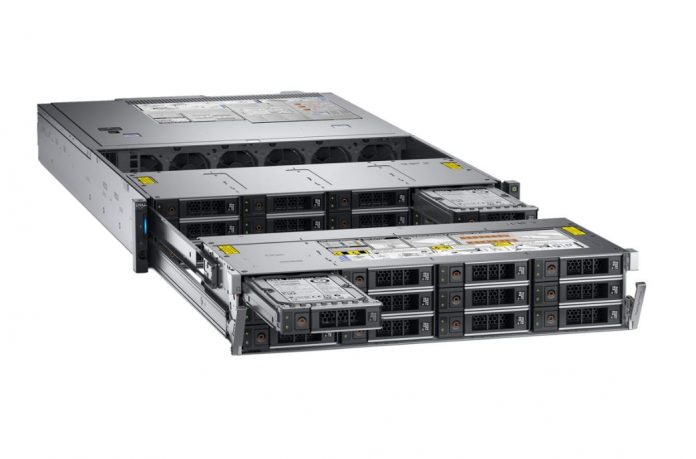Dell EMC is making a statement with its newest server. The Dell EMC PowerEdge R740xd2 is a 2U server with 26x 3.5″ LFF hard drive bays. You may have read our Dell EMC PowerEdge R740xd Review to see how well engineered the server is. While the PowerEdge R740xd is focused as a high-performance variant of the R740, with fast 2.5″ SFF storage bays and NVMe support, the PowerEdge R740xd2 is a 3.5″ alternative. Simply to fit that many drives in a 2U chassis takes serious engineering work.
Dell EMC PowerEdge R740xd2 2U Server
Powered by Intel Xeon Scalable CPUs, the Dell EMC PowerEdge R740xd2 is a standard height 2U storage chassis. The front bezel peels away to expose the first row of twelve 3.5″ SFF drive bays.

Dell EMC has a system to allow the PowerEdge R740xd2’s first row of drives to slide out exposing the second row of drives behind. This requires moving the fan partition further back in the chassis than we see in the standard R740 and R740xd and is an engineering accomplishment.

Inside the server, we have a dual Intel Xeon Scalable processors. Given the compact footprint, and pre-heating by the 3.5″ drives, the launch configurations only support up to 22 core CPUs. Each CPU gets 16x RAM slots instead of the maximum 24x that an Intel Xeon Scalable dual socket server can handle. For most storage servers, the 512GB RAM configuration will be plenty.
We are told that the PowerEdge R740xd2 also offers a hybrid configuration with up to 10x 2.5″ SSDs and up to 16x 3.5″ HDDs for evolving workloads. SSDs can be installed in the 3.5″ bays as well using adapters. Additionally, the 25th and 26th 3.5″ (or 2.5″) drives can be installed via an optional rear carrier:

One can see dual 1GbE ports, two USB 3.0 ports, a serial port, a management NIC for iDRAC 9, legacy VGA and serial ports as well as a LOM slot.

Leaked photos of the riser and rear drive configurations show that despite the server being more compact, Dell EMC has a number of different ways to configure the rear I/O area with a number of different hard drive and PCIe device configurations. This rear I/O flexibility in a single server adds to the overall flexibility of the solution to fit different deployment scenarios.
Using 26x 14TB drives the Dell EMC PowerEdge R740xd2 can hit up to 364TB in a 2U form factor or 182TB per U.
Final Words
The Dell EMC PowerEdge R740xd2 looks very well constructed from the photos. This is not the first server with two rows of 3.5″ LFF hard drives. Supermicro launched a design with a pop-up second row in the Xeon E5 generations and followed it up with a Xeon Scalable server. At the same time, if you are in the Dell EMC ecosystem, this is an important piece of hardware. It is a high-capacity 2U design and will serve as the building block for higher-density hard drive storage for its customers. We also expect to see hyper-converged solutions around this form factor. Dell EMC needs a top loader PowerEdge. The industry has moved there and every major hyper-scaler and most high-capacity scale-out storage organizations use top load 45 to 106 bay per 4U designs which offer much higher density.




That’s rather slick, especially for the potential in hyperconverged setups.
I’d love to see a version with 48 2.5 bays, but that might be a pipe dream at this point ;)
The R720xd’s also had optional dual rear bays, but they were 2,5″, on this model, even the rear units are 3,5″, that’s crazy!
What a model, i do wonder how easy maintenance would be when the server is running, for example replacing a disk on the second row. If the main housing won’t have to move that would be great, usually its clogged up with cables on the back.
Models like this makes you wonder why some servers have to be so big since apparantly, they can fit dual scalable’s in such a small unit.
The 48 x 2.5″ model can be found here:
https://www.hpe.com/us/en/product-catalog/servers/apollo-systems/pip.hpe-apollo-4200-gen9-server.8261831.html
“Dell EMC needs a top loader PowerEdge.” How important is that? Customers that want that storage density & scale, don’t they just buy the Dell DSS 7000? (its kinda old now but im sure there is a new version in the non-public channel)
This bears a shocking resemblance to HPE’s Apollo 4200 server…
So its basically the same that HPE has with the Apollo 4200 series
An “Engineering Accomplishment”? This is the same dual tray design that HPE has used for the Apollo line for last 2+ years.